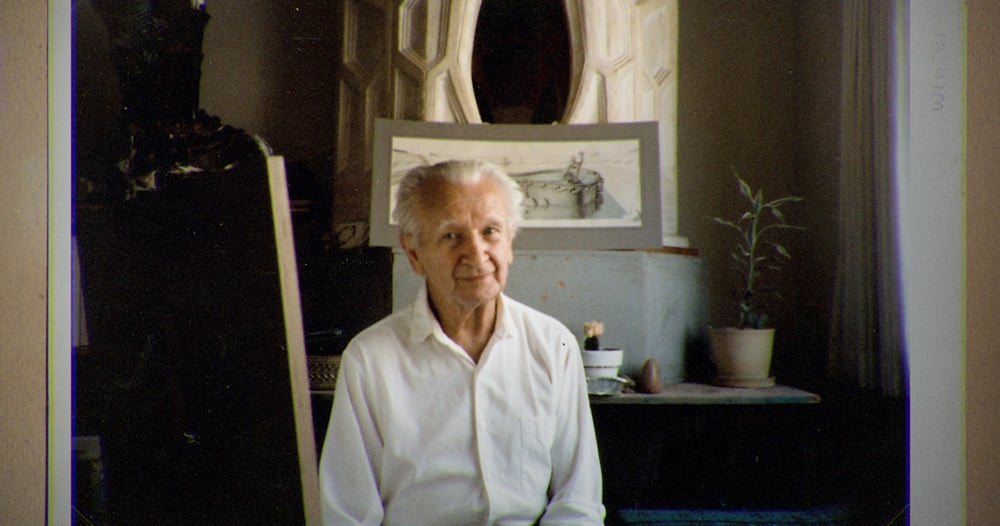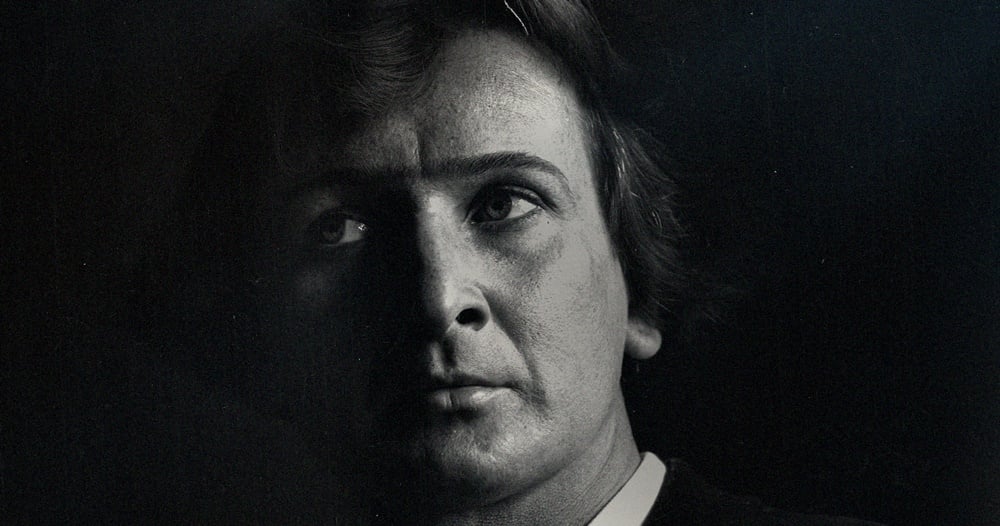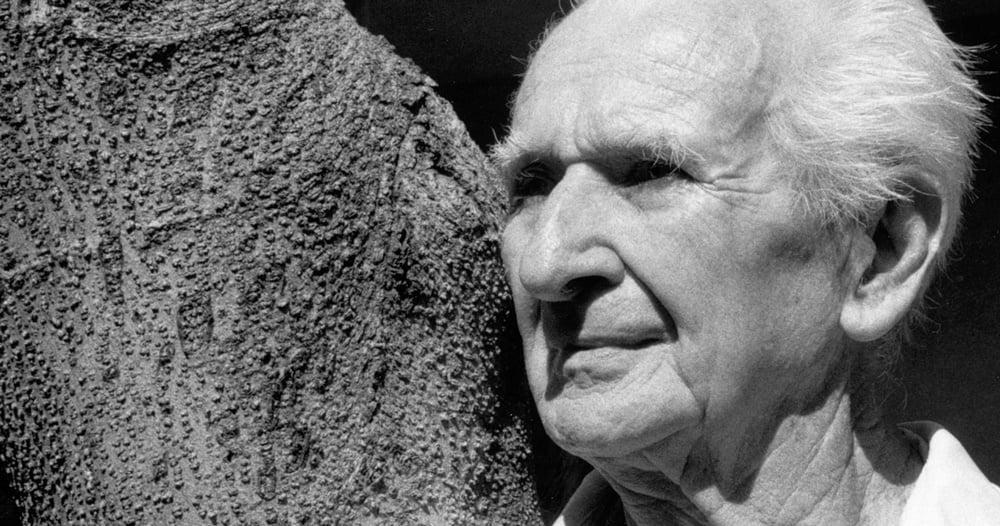Art World
Why Leonardo DiCaprio and His Father Produced a New Netflix Film About an Obscure Polish Artist
The film about the late artist starts streaming on Netflix December 21.

The film about the late artist starts streaming on Netflix December 21.

Eileen Kinsella

The story behind the making of the new Netflix documentary Struggle, which tells the tale of a talented but obscure Polish artist named Stanislaw Szukalski, is nearly as strange as the plot of the film itself.
For one thing, it was produced by Leonardo DiCaprio and his father, George DiCaprio, who was friends with Szukalski and a group of artists that included R. Crumb, Robert Williams. and comic collector Glenn Bray.
It was Bray who first became fascinated by Szukalski’s work when, in 1971, he came across one of the artist’s books. He was struck by the imagery, and astounded to learn that not only was the artist still alive, but he was living just a few miles away in Burbank, California. Bray befriended the artist and began recording his rambling musings about his life history and his bizarre personal mythologies, including “Zermatism,” his belief that people are under the control of a race of human-yeti hybrids.
George DiCaprio appears throughout the film in interviews while the only reference to Leonardo is a picture of him as a child with Szukalski and holding a note written to the boy advising him not to grow up too fast.

Still from the film Struggle (2018).
The film, which begins steaming on Netflix on December 21, shines a light on Szukalski’s colorful life and the hardships he endured during World War II. Born in Poland in 1893, he moved back and forth between Chicago and his native Poland as a young artist on the rise. By 1934, Poland had declared him the country’s greatest living artist and the Szukalski National Museum in Warsaw was home to most of his intricate paintings and massive sculptures, notable for their dramatic mythological imagery.
However, when the Nazis invaded Poland in 1939, the museum and most of Szukalski’s life’s work was destroyed. He fled to the US and settled in Los Angeles, took odd jobs, and continued to write and work, while slipping into near total obscurity. Until, that is, Bray discovered him.
By the end of the artist’s life, Bray had become a close friend and, by that time, perhaps his only one. (Szukalski’s wife died in 1980.) Bray collaborated on and published several books with Szukalski in addition to the beta recordings, all the while certain that his life and work was a story that needed to be shared with a broader audience.
Bray was also left in charge of Szukalski’s estate and archives when the artist died in 1987. He currently works with a foundry in Hollywood that produces editions of the artist’s work in bronze, since only plasters remained in Los Angeles.

Still from the film Struggle (2018).
“The timing of this project couldn’t have been better,” Bray told artnet News. “If you go back eight years ago, Netflix was still mailing red envelopes. They weren’t funding movies and they weren’t streaming. I’m so lucky that everything fell into place and that I happened to know George DiCaprio when I was young.”
A major stumbling block, one that is addressed in the documentary and will likely cause further debate, came at the end of filming when the crew happened upon some of Szukalski’s 1930s texts in Polish that suggest he held nationalistic, anti-Semitic views. In the film, George expresses regret about his friendship with the artist and spoke of being “blindsided,” but Bray is convinced that Szukalski was just caught up in the nationalist fervor sweeping Europe at the time, and that his ideologies changed over time.
Szukalski himself recounts a story from the time his star was on the rise of attracting the notice of a high-ranking Nazi official who asked whether he would be interested in making art for the German government. Needless to say, the drawing he says he submitted depicting Hitler in a tutu was promptly rejected and no further requests were forthcoming.
Struggle: The Life and Lost Art of Szukalski is available on Netflix starting December 21.